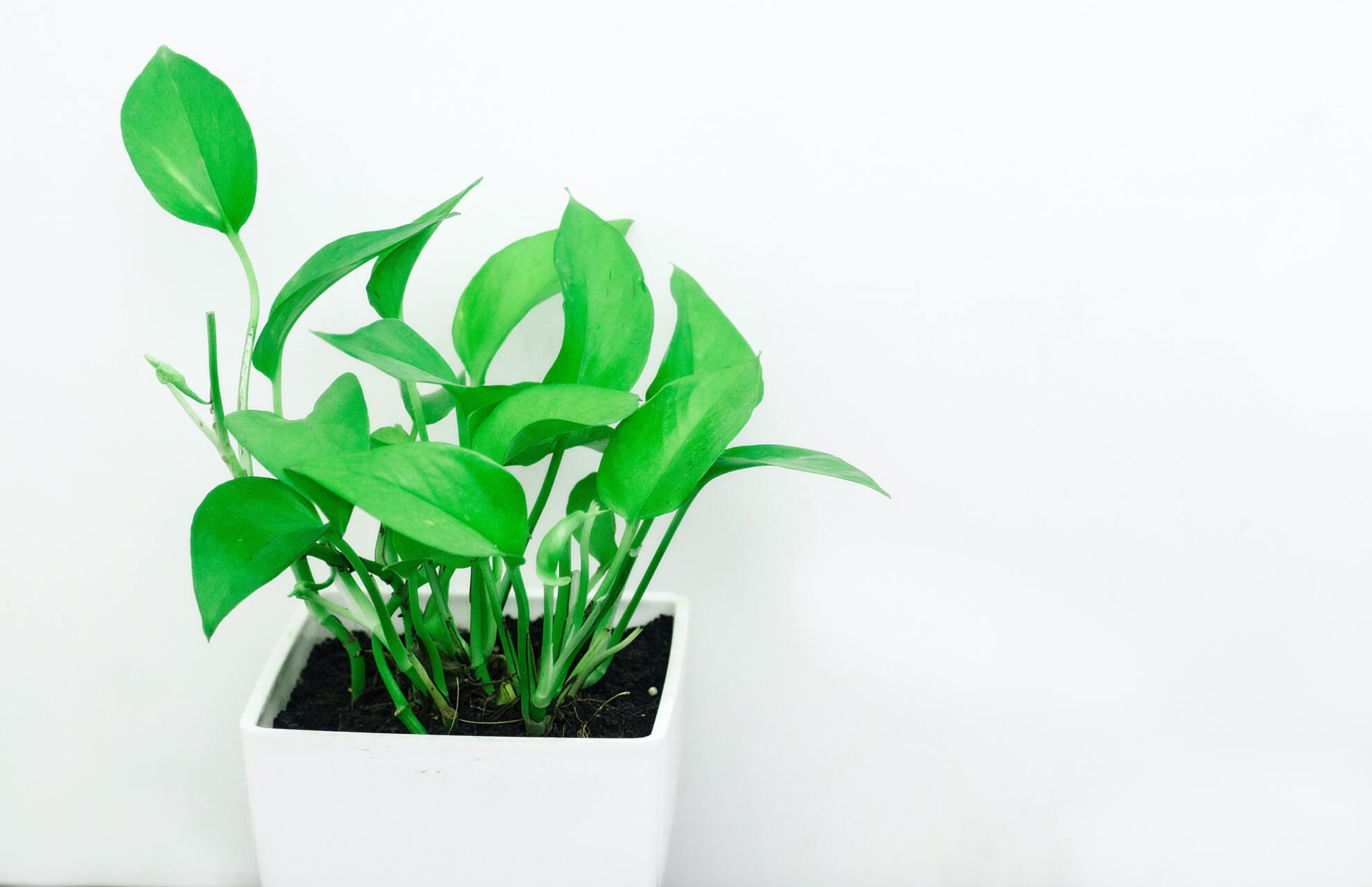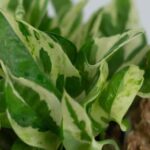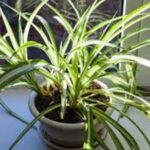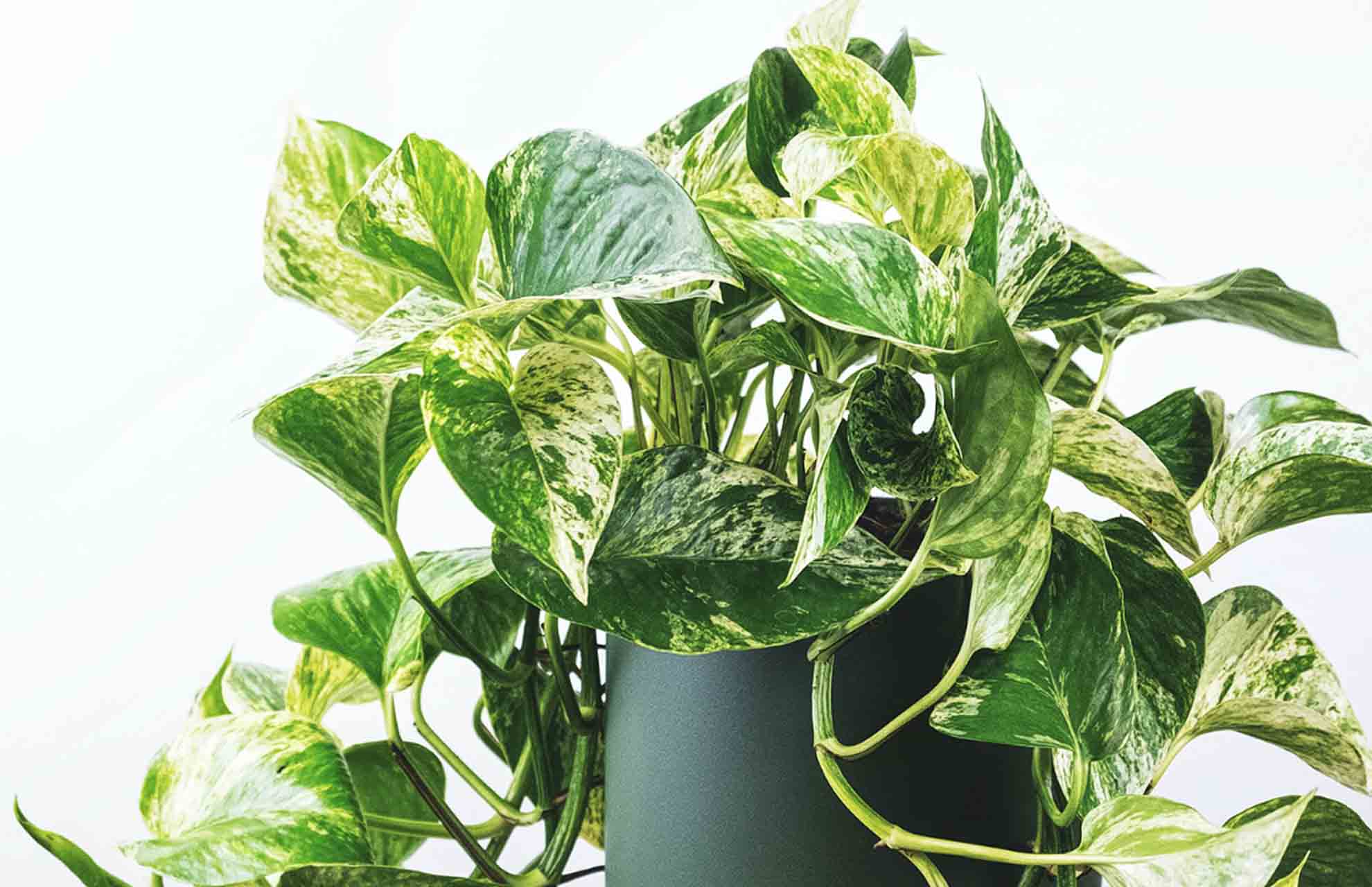The main reason pothos, a tropical ornamental vine, is grown is for its lovely foliage. Due to their rapid growth, they don’t need many elaborate care routines. Brown spots on pothos leaves could indicate pests, diseases, overwatering, overfeeding, low humidity, too much light, extreme temperatures, and underwatering. How to treat brown spots on pothos leaves can be learned by reading this article.
Reasons For Brown Spots On Pothos Leaves
Incorrect Watering
Browning pothos leaves could indicate either too much or not enough water.
- Underwatering
When neglected or without water for a long time, pothos leaves will begin curling inward, droop or wilt, turn yellow or have dry, crispy brown tips and margins. Your plant will grow slowly, drop leaves, wither, and eventually, die if the soil remains dry for a long time.
What to do
Start by confirming if your Epipremnum aureum is thirsty. Put your finger in the potting mixture to confirm this. It is thirsty if it is completely dried up to your first fingernail.
- Overwatering
Overwatering and root rot are other reasons for brown leaves, including splotches and spots (in case of an infection). However, the typical warning signs to look for are a wet, consistently wet potting mix and the lower leaves of your pothos turning yellow, then brown.
Although the leaves of your plant may curl, drop, wilt, or droop, they won’t feel dry, i.e., they will feel soft. Additionally, your potting soil might be mushy at the stem base, moldy, or pest-attractive.
What to do
You don’t currently have root rot, we’re assuming. In a later section of the post, we will discuss it.
Hold off on watering, make sure drainage holes are open, and provide your plant with bright, indirect light, the ideal temperature, and better air circulation.
Then, make sure your potting mix drains well and that you have the correct size pot (oversized pots may contribute to the problem).
- Water quality
Hardy plants like pothos can withstand tap water. However, the levels of fluoride, salts, and chlorine shouldn’t be excessive.
For instance, very high chlorine levels in the water may lead to an accumulation in the plant that gives it a scorched appearance, with dead or brown tissue on the edges, tips, and in between veins.
What to do
Use filtered water or rainwater. If your tap water isn’t too bad, leave it out overnight to let the chlorine evaporate.
Too Much Light
Scorched leaves have yellow to brown tips, margins, and patches due to excessive light exposure. In addition, the leaves will appear yellower or paler., washed out, bleached, or faded, and they may wilt or curl but won’t drop quickly.
What to do
If possible, relocate your pothos plants away from your grow lights or out of the direct sun. Put them outside in a greenhouse or shade.
If you’re placing them indoors, move them away from your window so the sun can’t shine through, or cover them with blinds. It makes no difference if your windows are facing east, west, or south. Avoid letting the sun touch your plant.
Diseases
Your Pothos houseplants may also get unsightly dry, brown spots due to various plant diseases. For instance, bacterial leaf spot (Pseudomonas Cichorium), tends to cause brown spots on The brown spots on pothos leaves are surrounded by a yellow ring.
- Root rot
Root rot pathogens will benefit from overwatering. These illnesses may also spread as a result of contaminated soil, water, plant material, planting on the ground, and poor sanitation.
Some may affect stems and leaves, causing black or dark brown spots or splotches, in addition to causing root rot.
What to do
Enhance air circulation, refrain from wetting leaves, and don’t overwater your pothos. Don’t have plants over other plants, place your plants on raised benches rather than the ground, and use good hygiene.
Disinfecting tools and pots is one aspect of proper sanitation. Additionally, prior to handling your plants, wash your hands.
- Leaf spot diseases
Brown spots on pothos could be caused by bacterial or fungal leaf spot diseases, i.e., these will cause black, dark brown spots on leaves and stems.
What to do
In the beginning, remove and destroy the damaged leaves. After that, thoroughly wash your hands before handling your plant again to prevent the spread of bacteria.
After that, use the finger test described above to determine how moist the soil is in your pothos plant and make sure the pot has enough drainage.
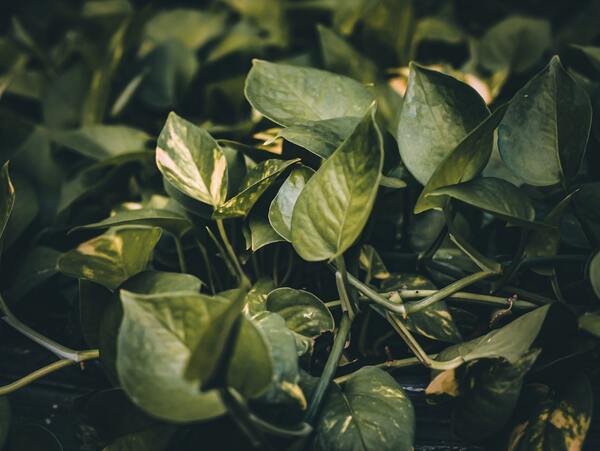
Excessive Use Of Fertilizers
Due to an excess of nutrient salts in the soil, fertilizing your pothos houseplants too frequently or too much at once can also cause leaf browning.
Browning brought on by excessive fertilizer use is typically identified by browning on the leaf tips and edges as well as on the leaf blades.
What to do
Pour water at room temperature on the soil for about 30 minutes to leach or flush it. Then, only during the growing seasons, you must feed your pothos with a balanced fertilizer once every 4-6 weeks. A different potting mix is an alternative.
Temperature Problems
- Heat stress
Your Pothos leaves may also develop brown or black spots as a result of extreme temperature conditions. When the temperature in the room drops below 50 degrees Fahrenheit, you might start to notice black or brown leaf sections.
Your Pothos leaves will turn black and stop growing at any temperature of 45 degrees Fahrenheit.
What to do
During summer heat waves or hot days, move plants to a cooler or shaded area. Additionally, avoid placing plants close to fireplaces, radiators, heating vents, etc.
- Coldness and cold drafts
If water crystalizes inside plant cells during cold winters or brisk drafts, the plant cells could be harmed. Your plant may droop and have patches of yellow, black, brown, or whitish leaves. Furthermore, a leaf as a whole could turn brown overnight.
What to do
Bring your plants inside during the chilly winters. Move any of your pothos that is near an open window or doorway or another drafty area to a warmer, windier location.
Last but not least, keep your plant away from extreme temperature changes. Browning, yellowing, and other symptoms will all be equally pronounced.
Not Enough Humidity
Subtropical plants like pothos prefer environments with at least 50% humidity, which is similar to those in their native Southeast Asia, Australia, India, and Indonesia.
If you don’t reside in a humid or subtropical area, your pothos might not be receiving enough humidity. Brown, dry spots may result from this, most frequently on the leaf tips or edges.
What to do
Consider using a plant humidifier if the air in your house is seriously deficient in moisture. Just make sure to pick one with an output that is appropriate for the size of the room.
You can also mist your pothos on occasion, but if you do this too frequently, it may actually encourage fungal illness and insect infestations. Therefore, limit your misting to no more than once per month.
Rootbound
It may be rootbound if you notice roots emerging from drainage holes or lower leaves that are yellowing or browning, including brown tips. Other symptoms include a plant that is leggy, leaves that are curling, wilting, drooping, falling, slow growth, etc.
The spiraling is a result of the roots’ inability to expand because they have outgrown the pot. They also do not receive enough nutrients or water.
What to do
Repot your plant if it is in the growing season into a pot that is 2-3 inches wider than the original container, or one that can hold the root ball and still have room for growth. Otherwise, hold off until late winter or early spring.
Attacks From Pests
However, insects like mealybugs, scale insects, spider mites, and aphids can be a problem because most pothos is kept indoors.
By sucking plant juices, these insects deprive the plants of nutrients and water. In addition, some people poison plants. and may manifest as tiny flying, still, or moving bumps and dots, some of which have waxy bodies.
What to do
Isolate infected and new plants. Then hose the plant to remove them. Clean the leaves with cotton balls dipped in rubbing alcohol if there are mealybugs.
Neem oil, insecticidal soaps, and horticultural oils should be used in cases of severe infestation. Additionally, apply dish soap solution to aphids and dormant oil sprays to thrips.
Other Reasons For Pothos Leaves Turning Brown
Along with the aforementioned, there may be additional, less common, natural, or expected causes in this situation.
Aging
As the lower leaves deteriorate, they first begin to turn yellow, then may have brown margins, tips, or patches that appear curling before the entire leaf turns dark brown or blackish.
This discoloration is a result of aging naturally. Cut yellowing leaves with a sterilized razor.
Potting Or Transplant Shock
Pothos leaves turning brown, including having brown tips and margins after repotting, transplanting, or moving, is a sign of plant shock. It might not operate normally while it adjusts.
Final Thoughts
Given that browning co-occurs with other symptoms, the reason is simple to ascertain. So, take a closer look at the soil and surroundings that your pothos is in and make any necessary adjustments.

